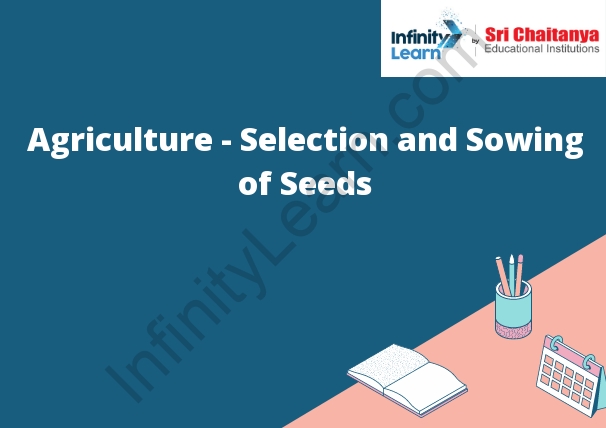Table of Contents
Introduction to Agriculture – Selection and Sowing of Seeds; Steps Needed For Agriculture Practice;
Types of Soil
Selection and Sowing of Seeds: Seeds are the basic unit of plant life. They are the smallest and simplest form of a plant. Seeds are produced by the flowers of plants. Flowers are the reproductive organs of plants. The petals of flowers are brightly colored and attract insects. Insects such as bees, butterflies, and moths are attracted to the flowers. They suck the nectar from the flowers. Nectar is a sweet liquid that is secreted by the flowers. The insects help to pollinate the flowers. Pollination is the process of transferring pollen from the male organ of the flower to the female organ of the flower. Pollen is the powdery substance that is found on the male organ of the flower. The female organ of the flower is called the pistil. The pistil has a sticky stigma. The pollen is transferred to the stigma. The stigma is the part of the pistil that receives the pollen. The pollen germinates and the plant begins to grow.
The selection of seeds is very important. The seeds should be healthy and free from pests and diseases. The seeds should also be the correct variety for the climate and the soil. The seeds should be sown at the correct time.
The steps needed for agriculture practice are:
1. Selection of seeds
2. Sowing of seeds
3. watering of plants
4. weeding of plants
5. application of fertilizers

1. Preparation of Proper Soil:
The first step in planting a tree is to prepare the soil. The soil should be loosened and aerated to provide good drainage and allow the roots to spread. The soil should also be enriched with organic matter to provide nutrients for the tree.
2. Planting the Tree:
The next step is to plant the tree. The hole should be dug twice as wide as the root ball and just as deep. The tree should be planted at the same depth it was in the nursery pot. The roots should be spread out in the hole and the soil should be packed around the roots.
3. Watering the Tree:
The tree should be watered thoroughly after planting. The soil should be kept moist but not wet. The tree should be watered regularly for the first year, especially during periods of drought.
2. Sowing of Seeds or Platelets:
The process of sowing of seeds or platelets is a very important step for the successful establishment of any clonal forestry plantation. The seeds or platelets should be sown at the correct depth and spacing to achieve the best results.
The depth of sowing should be such that the seeds or platelets are covered with a thin layer of soil. The spacing between the seeds or platelets should be such that there is good air circulation and light penetration.
3. Proper and Timely Irrigation:
The most important cultural practice for maintaining healthy turfgrass is proper and timely irrigation. Turfgrass needs 1 to 1.5 inches of water per week, depending on the type of grass, the temperature, and the amount of rainfall. If rainfall does not provide the required water, it is necessary to irrigate. The best time to irrigate is early in the morning, before the sun and wind have a chance to evaporate the water.
4. Supply of Proper Manure and Fertilizers:
Farmers should supply the necessary manure and fertilizers to the crops in order to have a good yield. The manure and fertilizers help to provide the essential nutrients to the crops for their growth and development.
5. Protection of Crops/Plants From Weeds:
Weeds are plants that grow where they are not wanted and can compete with crops or plants for space, water, and nutrients. Weeds can also harbor pests and diseases that can attack crops. Weeds can be controlled in a number of ways, including mechanical removal, cultural controls, chemical controls, and biological controls.
Mechanical removal is the most common way to control weeds. This involves physically removing the weed by hand, hoeing, or tilling. Cultural controls involve manipulating the environment to make it less favorable for weed growth. This can include using mulch to cover the ground, planting cover crops, and using herbicides to kill weeds. Chemical controls involve using herbicides to kill weeds. Biological controls involve using insects or fungi to kill weeds.
6. Harvesting Process:
The harvesting process begins by removing the fruit from the tree. The fruit is then washed and sorted according to size and quality. The fruit is then packed in boxes and transported to the processing plant. The fruit is then peeled and the seeds are removed. The fruit is then cut into small pieces and the juice is extracted. The juice is then pasteurized and bottled.
7. Storing Process:
The stored process is a computer program that is used to automate a business process. The stored process can be used to automate the entire process or just a portion of the process.








